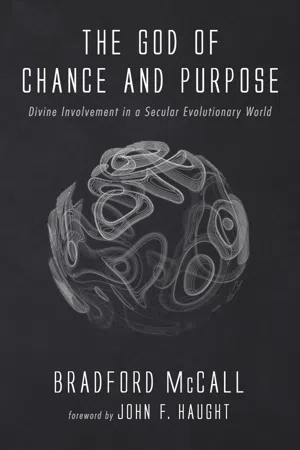![]()
1
A Tripartite Contemporary Relation of Science & Theology
Impressed by William Paley’s logic and eye for detail, the young Charles Darwin accepted the conventional observation that organisms were adapted exquisitely to their environments. This remarkable fact, Darwin agreed at the time, could only be explained by reference to the existence of an intelligent and benign creator. Having overcome the initial objections of his father, Robert, Charles accepted Capitan Fitzroy’s offer to be his gentlemanly companion on an exploration of various unknown lands, setting sail in 1831 on what would turn out to be an endlessly fascinating five-year voyage around the globe on the Beagle. It was a journey that would give surprising new direction to Darwin’s own life and also provide information about nature that has agitated the religious sensibilities of many theists ever since.
After returning home, Darwin’s earlier belief in the special creation of each distinct species transmutated into a strong suspicion that the origin of different living species had occurred gradually, in a purely natural way. Among the many questions that Darwin and other naturalists who thereafter studied the specimens he collected on the Beagle voyage began to ask was, Why do small but distinct variations appear among geographically distributed species of birds and other animals? Specific differences in species, Darwin began to suppose, could be accounted for without divine special creation if there had been minute, cumulative changes in living organisms over an immensely long time. In fact, following his return from the voyage of the Beagle, Darwin wrote of his own views,
In offering the mechanism of natural selection, Darwin gave a new kind of answer to what had previously been viewed as a strictly theological question. After he published his theory in 1859, Darwin effectively made natural science the new kind of ultimate explanation by making science itself able to provide a new answer to a very old theological question. After all, if natural science can account for something as complex as living organisms, including things as seemingly simple as the fish’s eye and eventually as complex as even the human brain, had not science then taken over theology’s place in the task of making life’s apparent designs fully intelligible? If natural selection is the ultimate cause of apparent design, do classic theological explanations matter at all? What good is theology if science can provide a satisfying answer to one of humanity’s most burning questions? These questions are still quite alive today—over one hundred and fifty years later.
Notably, in the wake of the On the Origin of Species, religion underwent a significant reformulation. God, who had previously been seen as the primary artist of nature, began to be viewed as a more distant deity—even more so than the developments of Newton in the previous century had relegated him. Responses to the theory of evolution by religious communities proceeded along several lines, from outright rejection by the fundamentalists to cautioned acceptance by the religious moderates, to unquestioned acceptance by theological liberals. Fundamentalists viewed Darwinism as an attack on the tenets of Christianity and therefore rejected the insights gleaned from the science of evolution. Scientifically, there were also mixed reactions to the advent of Darwinism, ranging from outright rejection to qualified acceptance to full embrace. Following his famous teacher Georges Cuvier, Louis Agassiz asserted that the major groups of animals do not represent ancestral branches of a hypothetical evolutionary tree but, instead, document a great plan that was used by the Creator to design the many different species in existence today. Asa Gray, however, was a Presbyterian Christian scientist who heartily accepted Darwinism. He spent much of his life arguing on both a popular and a scientific level for the compatibility of evolutionary theory and religion by contending that natural selection was not inconsistent with a deity superintending the process of evolution. He gives us a model to follow today.
People throughout the ages have attempted to understand the universe and their place within it. In attempting to develop a worldview that explicates their position in the world, religions have typically played a very important role, but particularly since the biological revolution onset by Darwin, biology has also played a crucial role. How should we attempt to understand the relationship between science and theology/religion? In what follows, I will attempt to answer this overarching question by cursorily examining several attempts in the past to classify the science and theology relationship. I will also develop my personal view of the relation between science and theology, with a heavy reliance upon the concepts of biology.
A Delineation of Models Regarding the Relationship between Science and Theology
In this section of chapter 1, I delineate several aspects of previous models of the relationship between science and theology/religion. John Hedley Brooke and Geoffrey Cantor, for example, argue that neither religion nor science is reducible to some sort of timeless essence; rather, both must be understood in their historical particularities—they are inextricable from the times in which they arise. Within the literature on the science and theology relationship today, there are four general ways of responding to the main question of this chapter. On the one hand, we have those who think that there are no real limits to the competencies of science, what it can do, and what it can explain. Richard Dawkins, for example, writes that since we have modern biology, we have “no longer . . . to resort to superstition when faced with the deep problems: Is there a meaning to life? What are we for? What is man?”
Note also here that the thirty-year debate between Stephen Jay Gould and Dawkins is very contentious in its nature, continuing up to the death of Gould in 2002. Since then, their feud has continued through various proxies. It may be said that Dawkins and Gould agr...
